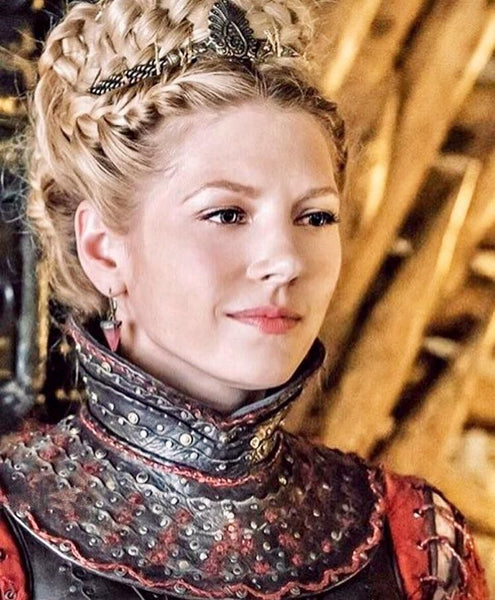Lagertha: Viking Shieldmaiden or Norse Goddess?
To any Viking fan, Lagertha is not a strange name. But what is the real identity of this figure? This blog post is about Lagertha. The question is whether she was a Viking shieldmaiden or a reflection of a Norse goddess.
Legend had it that Lagertha was the wife of King Ragnar Lothbrok. She was not the only wife of Ragnar though. Lagertha was also mentioned as a ruler of part of Norway. However, according to some modern scholars, Lagertha was not a historical figure. Instead, she was the reflection of a Norse goddess.
Lagertha appeared in the ninth book of Danish history by Saxon Grammaticus. Her life as a female warrior or in Viking word as a shieldmaiden began when Fro the king of Sweden invaded Norway and killed king Siward. This Swedish king humiliated the women of the Norwegian king in public which stroke waves of anger. Many women that got abused by Fro wore men's clothing and fought along the side of Ragnar. According to the source, Lagertha was the key to Ragnar's success for her talent and wisdom.

Lagertha as a queen
Ragnar fell for Lagertha and her courage. He proposed Lagertha and had to endure some challenges to win the hand of Lagertha. After killing a bear with a spear and choking a hound, Ragnar won the heart of Lagertha.
But the love of this pair finally came to an end when Ragnar fell in love with a Swedish princess. He divorced Lagertha and married princess Thora.
Although they broke up, when Ragnar needed help, Lagertha was always willing. Lagertha once sent 120 ships to aid Ragnar in a civil war.

Lagertha as a Viking shieldmaiden
Still, some opinions of modern scholars claimed that Lagertha was not a historical figure. Some agreed that she was the work of literature, a figure piling up from many sources telling stories of many Viking women. Some believe that she was the literal reflection of Norse goddess Thorgerd. The debate about Lagertha's identity and whether she was historically true or not might forever live on.
From my perspective, finding the answer to it won't help anything. Instead, the lesson from her stories matters. She is the image of a traditional Viking woman who devoted her life to the success of her husband and a good mother to run the family when the father was away. After all, she is the representative of Viking women who lived within the threshold to run the family and the representative of a Viking shieldmaiden who was afraid of none when it came to protecting her beloved ones.




